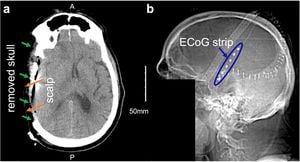Researchers have recently employed cutting-edge imaging technology to reveal significant variations within the immune microenvironments of non-small cell lung cancer, highlighting distinct features between lung adenocarcinoma (LUAD) and lung squamous cell carcinoma (LUSC). This groundbreaking study not only enhances our comprehension of cancer biology but also suggests novel strategies for precise and targeted therapies aimed at improving patient outcomes.
Lung cancer remains the leading cause of cancer-related mortality worldwide. Among lung cancers, approximately 85% fall under the classification of non-small-cell lung cancer (NSCLC), which is primarily divided between LUAD and LUSC. These two subtypes together represent the vast majority of cases and are known to possess divergent genetic characteristics and treatment responses.
The new study, conducted at the McGill University Health Centre, involved analyzing 204 histopathology images from 102 patients diagnosed with NSCLC. Researchers utilized imaging mass cytometry—a state-of-the-art technique—to spatially dissect the immune architecture of tumors, aiming to elucidate the complex interactions between various immune cell types and their impact on patient prognosis.
By comparing immune microenvironments from LUAD and LUSC, the research team aimed to address existing gaps related to their distinct spatial arrangements and cell population compositions. Historically, the intersection of histological subtypes and immune microenvironments has been relatively uncharted territory, making this study particularly noteworthy.
The researchers observed significant differences between the immune landscapes of LUAD and LUSC. Notably, it was found through spatial analysis of immune cells' arrangement, particularly macrophages, revealed patterns strongly correlated with patient outcomes. The study emphasized, "This spatial analysis revealed distinct patterns of immune cell aggregation, particularly among macrophage populations, which correlates with patient prognosis,” demonstrating the potential for these findings to influence treatment approaches.
One important discovery was the higher levels of immune cell infiltration found within LUAD compared to LUSC—45.3% of total cells versus 36.7%, respectively. This observation prompts significant questions concerning how immune cells might contribute to cancer progression and patient survival differently across these lung cancer subtypes.
"Recognizing these distinctions is key for designing precision therapies,” stated the authors, signaling the importance of stratifying treatment options based on the specific immune characteristics detailed within each subtype.
The immune architecture within LUAD displayed notable elevations of certain immune cell types, such as CD4+ T helper cells and macrophages, whereas LUSC was dominated by neutrophils. This unique composition of immune cells—in conjunction with their spatial organization—has broader implications for finding effective treatment targets and improving patient management strategies.
Importantly, the study advocates for subtype-specific research when analyzing tumor immune microenvironments. The finding, “We observed significant differences between LUSC and LUAD immune landscapes,” reiterates the notion of customized therapy approaches rather than universal strategies.
The researchers’ findings underline the complexity of immune interactions within these tumors and suggest promising directions for therapeutic interventions. The renewed focus on the spatial relationship of immune cells emphasizes how their arrangement can inform clinical outcomes.
While the study introduces pivotal insights, the authors acknowledge some limitations, particularly with the size of tumor regions analyzed which could yield sampling bias. They stress the necessity of future research to validate these findings across larger patient cohorts, establishing even more precisely defined subgroups within NSCLC.
Overall, this study enriches our current tobacco-free debate, reiterates the necessity of investigating immune landscapes within distinct lung cancer types, and opens doors for future innovative therapies aimed at combatting the prevalent disease of lung cancer more effectively.



